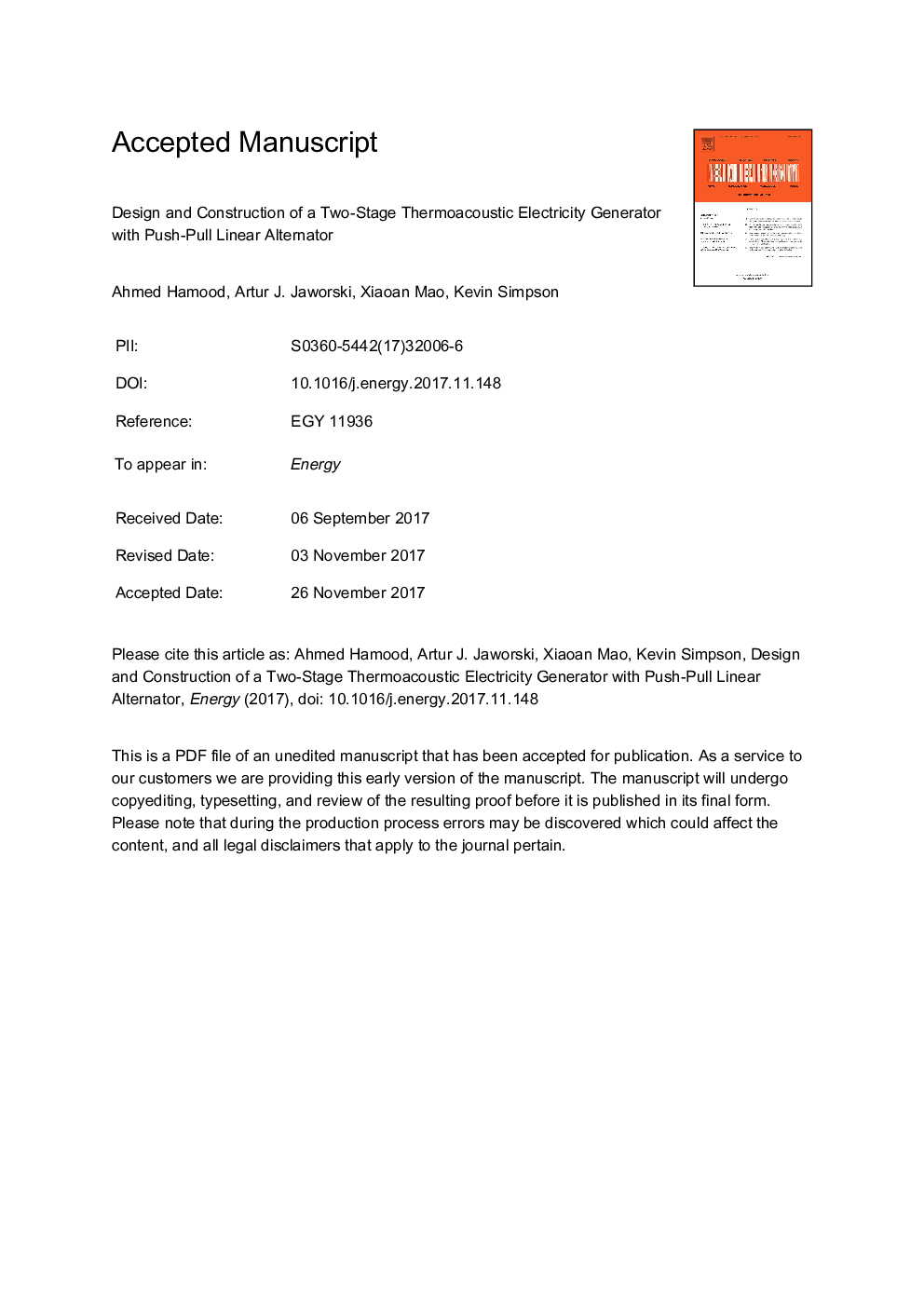| Article ID | Journal | Published Year | Pages | File Type |
|---|---|---|---|---|
| 8072418 | Energy | 2018 | 40 Pages |
Abstract
Travelling-wave thermoacoustic heat engine is capable of converting heat to acoustic power which in turn can be used to generate electricity by a linear alternator. The thermoacoustic heat engine can work in a wide range of heat quality, giving it the ability to be used for waste heat recovery. In this paper, a new configuration of looped-tube travelling wave thermoacoustic engine is proposed, which consists of two identical stages each having a power extraction point, and the linear alternator connecting these two points working in “push-pull” mode. This enables a more effective acoustic impedance matching compared to the use of multiple linear alternators known in the literature. The laboratory demonstrator has been designed, built and tested. The applied heat source temperature is similar to that of the internal combustion engine exhaust gases in order to explore the potential of using the device for waste heat recovery from road or marine transport. In experiments, the maximum electric power of 48.6Â WÂ at thermal-to-electric efficiency of around 6% was achieved with helium at 28Â bar as working fluid and 297Â K temperature difference across the regenerator. The performance of the device has been analysed and compared to modelling performed using DeltaEC simulation tool.
Related Topics
Physical Sciences and Engineering
Energy
Energy (General)
Authors
Ahmed Hamood, Artur J. Jaworski, Xiaoan Mao, Kevin Simpson,
